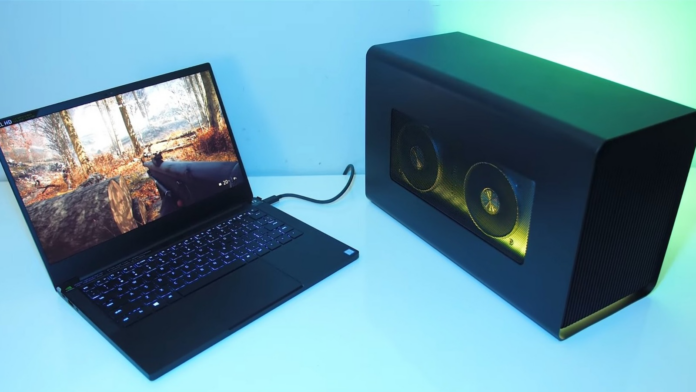Laptops can be incredibly convenient due to their thin and lightweight form factors, making them extra portable. For those into gaming, however, laptops with an integrated GPU or a budget-friendly mobile graphics card can provide less-than-ideal performance. Desktop GPUs have a distinct advantage in that they aren’t held back like laptop GPUs in terms of memory bandwidth, power draw, size, and thermal restrictions.
Advertisement
So, is the only solution for a serious gamer to go with a desktop rig or sink some serious cash into a top-of-the-line gaming laptop? Not so fast! There is another intriguing pathway towards more frames per second and superior graphical fidelity: an eGPU. An eGPU, or external graphics processing unit, allows you to connect and utilize a desktop graphics card, boosting performance. Options like the Alienware Graphics Amplifier have been around for a decade now, but newer options like the yet-to-be-released Alienware Polaris EGPU concept are improving on the idea. The GPD G1 Docking Station, for example, features an RX 7600 XT, with options for both OCuLink and Thunderbolt connections.
Unfortunately, there are some issues with an eGPU, primarily latency, which limits the potential of potent GPUs. However, if your aging laptop is working sluggishly during games or other demanding applications and can accommodate either OCuLink or Thunderbolt 3 or 4, an eGPU utilizing a mid-range desktop card could be a decent option. Similar to Windows users, for those in the Apple ecosystem, macOS external GPU support comes with good and bad news.
Advertisement
What Is An eGPU And Does Your Computer Need One?
RELATED ARTICLES




